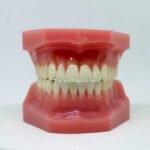Glass doors are everywhere nowadays, and it really is not surprising to see why. They look good, are easy to clean, add a modern touch to a home or office, make a space feel more open, and—best of all—allow natural light to enter. However, let’s be real, nobody likes too much sun turning their place of comfort into an oven. People aren’t fond of sitting inside one, after all. Not to mention, all that glare in our screen-oriented world just makes basic things like watching TV quite a frustrating experience. So, how does one deal with it? Well, you might not realize it, but security film for glass doors actually solves this problem. Let’s find out how.
What Is a Security Film, and Why Do You Need It?
Let’s first clarify what a security film is. One might believe security films are the same as window tint, but they are slightly different. A window tint only darkens the glass for privacy and sun protection. A security window film, on the other hand, can do both. It reduces glare, heat, and UV exposure while also making the glass more resistant to shattering. It is thicker, multi-layered, and holds the glass together in case of an impact, stopping shards of glass from scattering everywhere. These benefits, however, can only be enjoyed if the film is installed properly, which is why the majority of individuals prefer getting a professional glass door security film installation service.
How Security Film Reduces Heat and Glare
So, here’s the science behind the entire process. When the rays of the sun hit glass doors, the heat and glare come straight through. There is no barrier, as light passes through glass with ease. A security film becomes a barrier—a filter—that reflects and absorbs heat, so less of it gets inside. The heat reduction with glass door film depends largely on the type of film you choose, but the potential reduction ranges from 30% to 80%. This helps keep your space cooler, and now, you only have to use the blinds when you want absolute darkness.
To maintain their effectiveness, it’s also important to learn how to clean tinted windows safely and properly to ensure they are not damaged. Something as simple as using the wrong cleaning product can damage the film and cause peeling over time. Here’s how you do it:
- Harsh chemicals, especially ammonia-based ones like Windex, break down the film adhesive and cause premature peeling. Use a combination of mild soap and water—that’s all you need.
- Do not use a dirty cloth, paper towels, or, worse, a rough sponge to wipe the film. Get yourself two soft microfiber cloths or a rubber squeegee and wipe in a regulated pattern to prevent scratches.
- If you spot a stain, don’t try to scrape it off or use a sharp object to pick at it. Use a damp cloth and your mild cleaner to rub it off gently. Patience is key.
- If you notice any peeling or bubbling, it’s best to get it fixed ASAP to maintain the film’s performance.
With proper care, your security film can last 10 to 15 years, making it a solid investment for comfort and safety.
Choosing the Right Security Film
Security films come in a variety of options, varying in thickness, tint level, UV protection, and, of course, different brands. Here’s what to consider:
Thickness:
- 4-8 mil – Basic glare/heat control.
- 12-15 mil – Added security (delays forced entry).
- 20+ mil – Maximum protection (impact-resistant).
Tint Levels:
- Clear – Maintains visibility.
- Light tint – Reduces glare subtly.
- Dark tint – Best for heat rejection.
Ceramic vs. Metallic Films:
- Ceramic – Non-reflective, great for heat control.
- Metallic – More reflective, boosts security.
As for brand reputation, always opt for a brand that offers a warranty on its products—it’s a sign they believe in their product. Faith in a product comes after plenty of R&D and testing. Most reputable brands offer a 10-year warranty.
Final Thoughts
Glass door security films serve multiple purposes and are a non-invasive way to upgrade not just the aesthetics of your home but also its safety, comfort, and energy efficiency. Security films cut down glare and heat while adding a layer of protection.
Consult a professional regarding what type of film you need and get assistance with the installation process—some things aren’t particularly DIY-friendly.
















